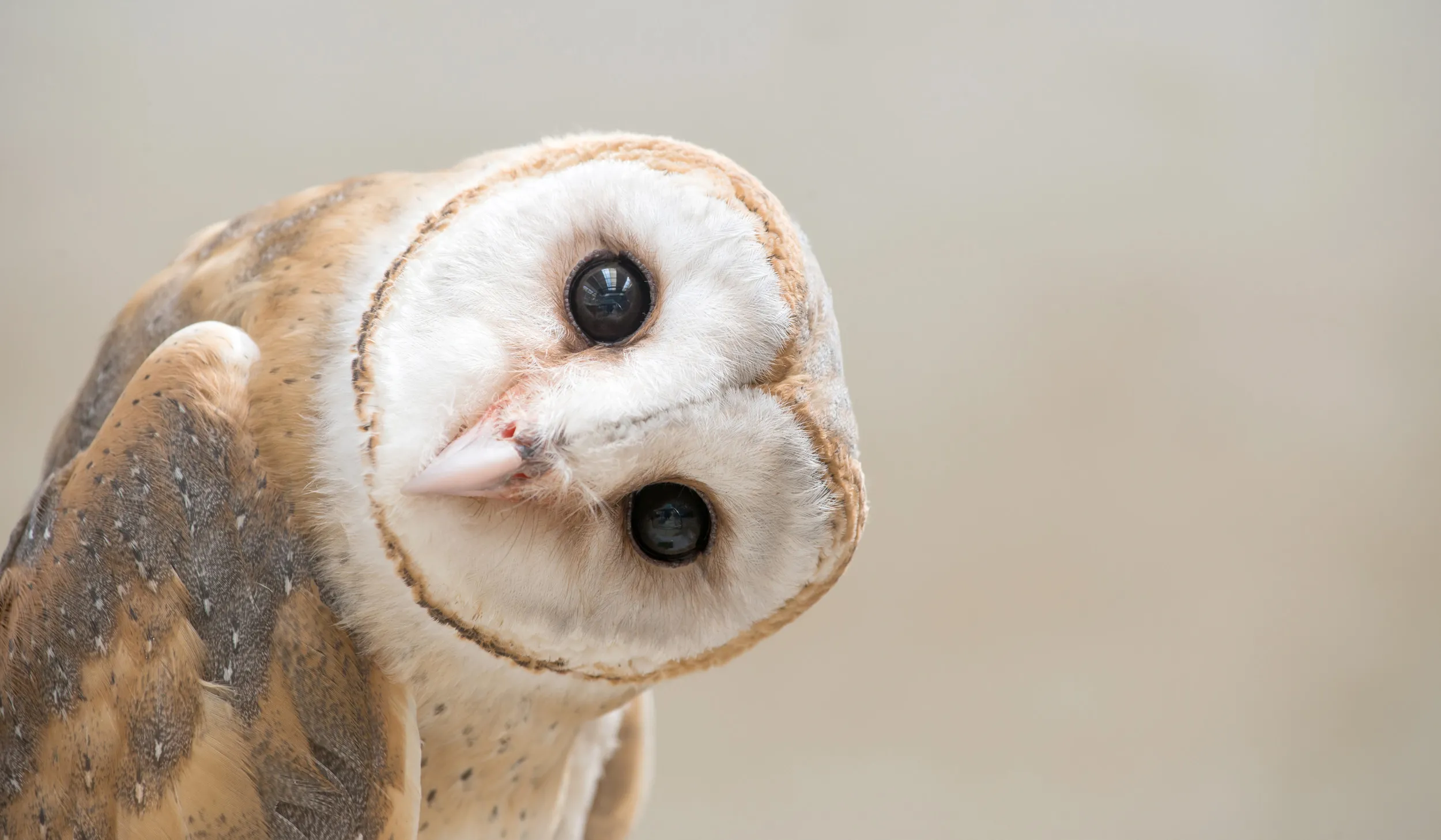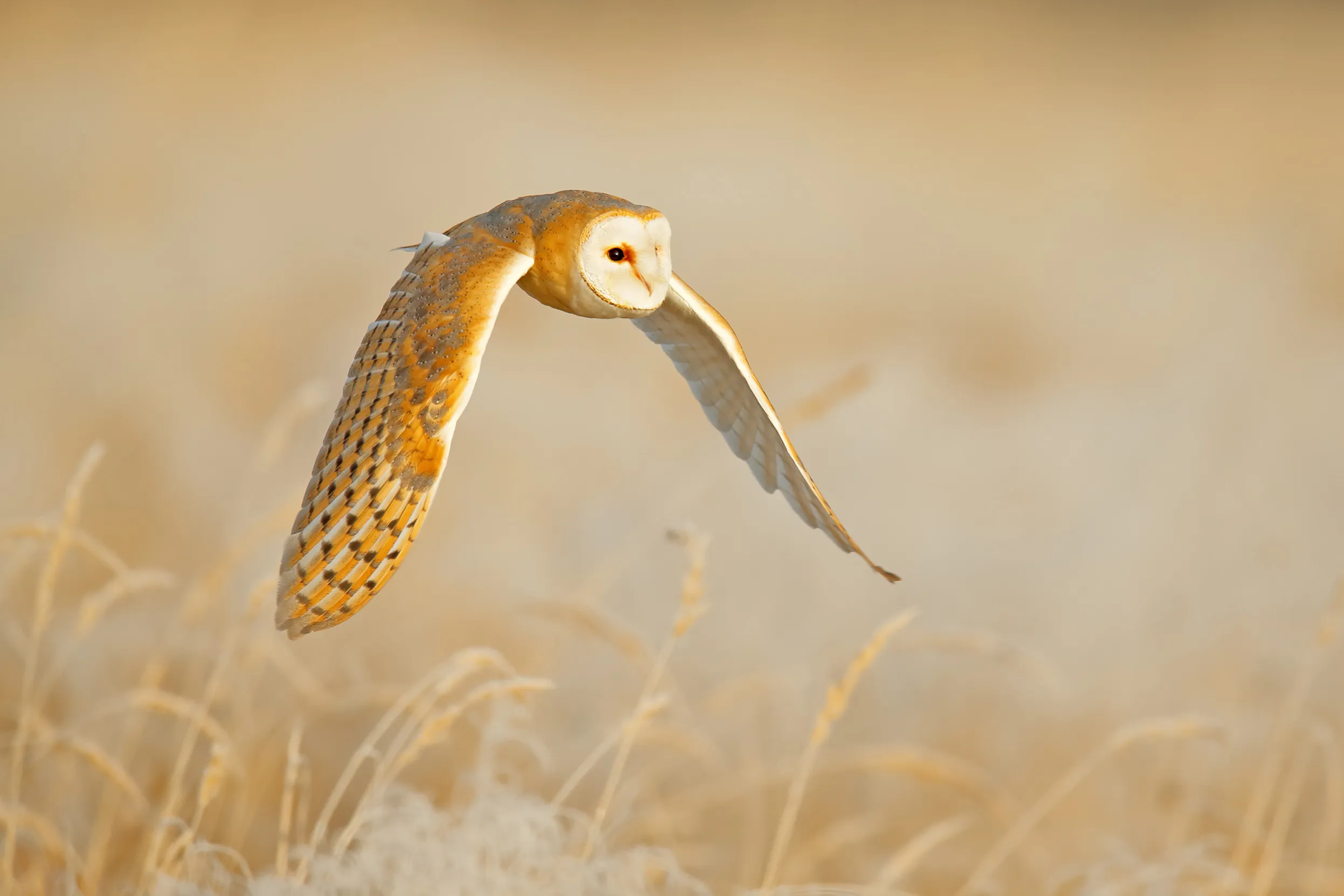
Barn Owl conservation - Advice for farmers
The Barn Owl is primarily a farmland bird, hunting for small mammals over rough grassland and along the edges of fields.

On this page
Barn Owls in brief
The Barn Owl population decline is largely a result of reduced food supply, with fewer areas of rough grassland available for hunting.
The loss of old barns and increased road deaths are also significant in many areas. Barn Owls can be encouraged by providing prey-rich rough grassland and artificial nest sites.
Key point
- Erect nest boxes in pairs (within 500m of each other) at a density of about one pair per square
-
Create tussocky grassland (with a deep litter layer) as either marginal strips at least 2m wide
What this species needs
Nest and roost sites
They are traditionally associated with old barns and hollow trees but take readily to nest boxes placed in modern farm buildings, trees or spaces provided in barn conversions.
Food and habitat
They primarily eat voles but also regularly include mice, shrews and rats in their diet. Their prey occurs at highest densities in rough grassland – tall, tussocky grass with a thick litter layer. Grass which is too short, lacks a litter layer or is overgrown with scrub is far less suitable for barn owls.

How to help
Nesting habitat
- Protect and maintain existing nest sites in buildings or tree holes. Existing nest sites can be supplemented with nestboxes of various types.
- It is a good idea to erect boxes in pairs – within 500m of each other – at a density of about one ‘boxpair’ per square kilometre.
- With many barn owls killed each year by cars, it is strongly advised not to mount a box within 1km of a major road.
Food
- A pair generally hunts within 2km of the nest site during the breeding season, and requires rough grassland in the form of blocks and/or wide strips along field margins, woodland edges or watercourses.
- Rough grass strips should be at least 2m wide (ideally 6m) and it is preferable for blocks of rough grassland to be linked by hedges or grass strips. Livestock should be prevented from grazing the grass strips.
- Rough grassland can be established using a grass-seed mix that includes tall, tussock-forming species (cocksfoot and timothy) along with shorter, softer grasses (Yorkshire fog, fescue and bent species).
- The first year should be regarded as an establishment year, with the margins cut regularly to establish the sown grass species.
- Following establishment, areas should be topped, or lightly grazed every second or third year. Cutting should be undertaken in the autumn with the cutting blades set at 10cm (4in) or higher. Where possible, cut rotationally within the landscape (cut each ditch-side in alternate years).
- Take care to protect Barn Owls from secondary poisoning during rodent control and be aware that bait covering does not reduce the risk. Contact the Barn Owl Trust or visit their website for detailed information.